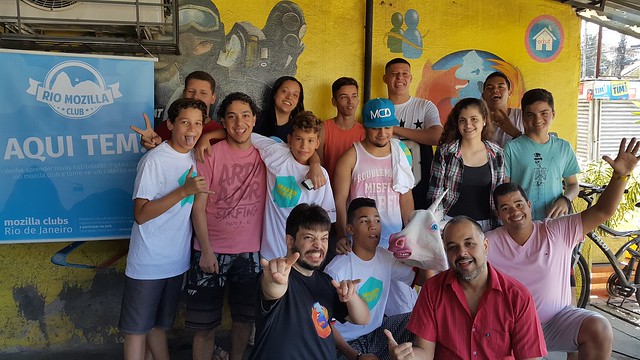Starting today, we’re kicking off an effort to localize our Web Literacy Basics I curriculum and we need your help!
There’s increasing interest in starting Mozilla Clubs and teaching web literacy skills in communities around the globe, but our current curricular modules are only available in English. We know this a blocker for many and we are committed to finding and building easier ways for people to join in and help us translate this content into their local language.
We’re starting with Web Literacy Basics I, a great beginner module that includes six activities focused on teaching the basics of reading, writing and participating on the Web. Our hope is have this module translated into at least five other languages by the end of 2015! Our top priorities are Portuguese, Spanish, Bengali, and Arabic based on interest to start Mozilla Clubs in those regions, however we welcome other translations as well.
Localizing curriculum is more than just translating the language–in some cases there is also a need to adapt content for cultural context. To truly engage people in the learning process, curriculum should have relevance to local conditions and environments. While much of our current content has been tested and piloted in different learning contexts–from classrooms and libraries to afterschool clubs and community gatherings–our hope is to be able to offer truly localized curriculum that meets learners where they are. To that end, we’re looking for volunteers who have experience with translation as well as with mentoring and teaching others.
Currently, this content lives in HTML files, however we’ve created a simple way to translate Web Literacy Basics I using markdown. It utilizes GitHub Issues, but don’t fear! The process is easy even for first-time GitHub users, and it’s a great way to get your feet wet with this popular, Web-based code- and project-management service. Ultimately all translated activities will end up looking official like this and be added to teach.mozilla.org/activities.
How-to translate Web Literacy Basics I
- Visit the “Source Code” link for each activity below – there are two files to translate for each activity
- Click the “activity data” folder, then the “content” folder, to access the activity.md and aside.md files inside
- Use your favorite text editor to translate the content
- Create a new issue in the desired repository with a title such as: Localization of aside.md into Portuguese
- Paste in your translated content
- Repeat the same process and create a new issue for the translation of activity.md file as well
- Then we’ll handle the rest! We’ll do a quick review, and if all looks good, will get it posted to teach.mozilla.org/activities where it will ultimately look like this
- As a token of our appreciation, the first 20 volunteers to successfully translate curriculum will receive a free Mozilla T-shirt from our gear store!
Activity links
- Kraken The Code Source Code
- Ping Kong Source Code
- Hack the News Source Code
- HTML Puzzle Boxes Source Code
- Web Chef Source Code
- Story of Us Source Code
For more experienced GitHub users, you can find a separate set of instructions in the readme files for each activity repository above.
This effort kicks-off today, and we encourage anyone to participate, so please help us spread the word! We’ll also be sprinting on this live with a small group at MozFest next week, and will keep up the momentum throughout November and December.
You can feel free to ask any questions, or share feedback or requests for assistance in our Discourse forum.
Thanks in advance for helping us bring important web literacy skills to more communities in more countries around the world. We are incredibly appreciative of your contributions!

Moin Shaikh wrote on
:
wrote on
:
Mozilla wrote on
:
wrote on
:
Raj Nilayam wrote on
:
wrote on
:
Mozilla wrote on
:
wrote on
:
Chandrakant Dhutadmal wrote on
:
wrote on
:
Mozilla wrote on
:
wrote on
:
bittin wrote on
:
wrote on
:
Mozilla wrote on
:
wrote on
:
Vasanth wrote on
:
wrote on
:
Hannah wrote on
:
wrote on
:
Nambuya wrote on
:
wrote on
:
Kristina Gorr wrote on
:
wrote on
:
Praveen wrote on
:
wrote on
: